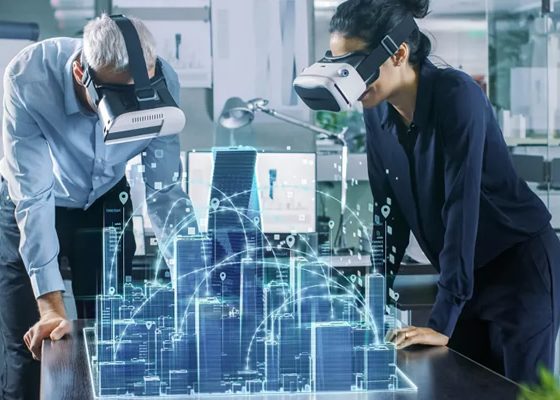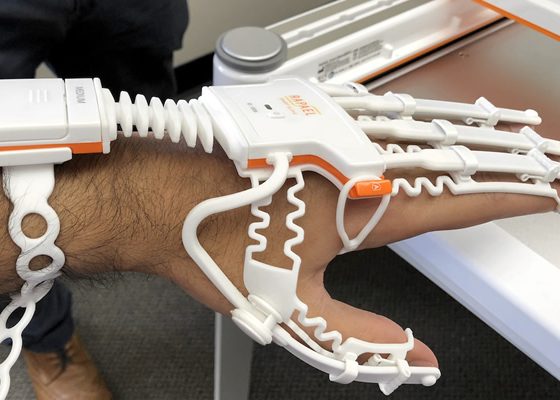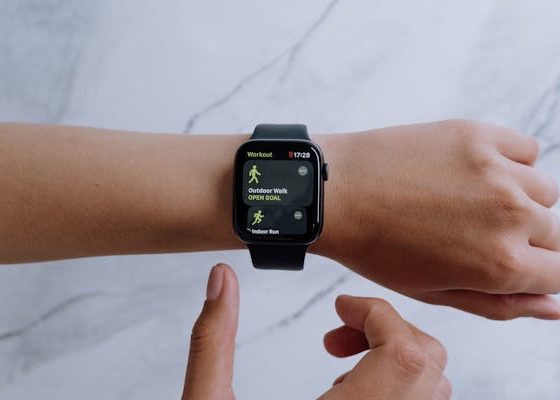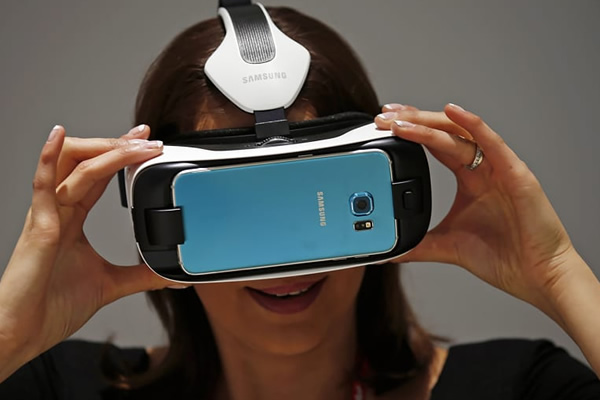
Virtual Reality (VR) is no longer confined to the realm of science fiction. It’s now a tangible and transformative technology that is reshaping the way we interact with the digital world. In this article, we dive deep into the immersive realm of VR, exploring the latest advancements in VR headsets and wearables and uncovering the benefits of VR technology. From high-end PC-based headsets to groundbreaking wearables, we unravel the captivating journey of immersive experiences.
Understanding Virtual Reality
Virtual Reality, or VR, is an immersive digital environment that transports users to a simulated reality. From its inception in the 1960s to the present, VR has undergone a remarkable evolution, driven by advancements in hardware and software. Its influence extends across various industries, from entertainment and education to healthcare and beyond. The benefits of VR technology are manifold, offering enhanced learning experiences, therapeutic applications, and innovative solutions for training and simulation.
Benefits of VR Technology
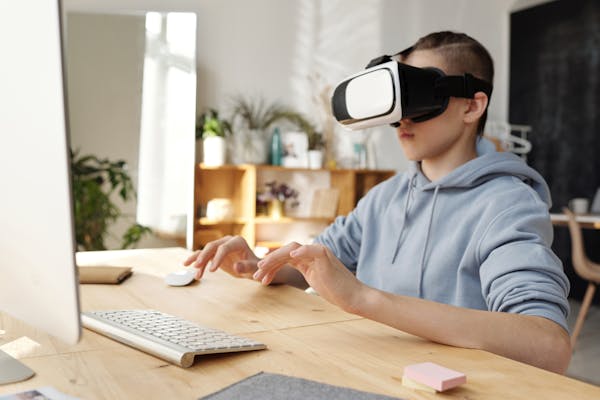
- Immersive Experiences: One of the key benefits of VR technology lies in its ability to offer immersive experiences like no other medium. By transporting users to digital environments that feel remarkably real, VR blurs the line between the physical and virtual worlds, engaging multiple senses simultaneously. Through high-quality visuals, spatial audio, and interactive elements, users can deeply engage with the virtual environment, fostering a sense of presence and embodiment.
- Enhanced Learning: One of the significant benefits of VR technology is Enhanced Learning and Training. By immersing users in realistic simulations, VR creates an interactive and engaging environment conducive to accelerated learning and skill development. Learners can practice tasks in a safe and controlled setting, allowing for repeated trials without real-world consequences. This fosters quicker learning, improved retention, and better transfer of skills to real-world scenarios. Additionally, VR enables personalized learning experiences tailored to individual needs and preferences, further enhancing the effectiveness of training programs.
- Therapeutic Applications: One of the significant benefits of VR technology lies in its therapeutic applications. VR technology provides a unique platform for immersive experiences that can aid in various forms of therapy, such as exposure therapy for phobias, PTSD treatment, pain management, and rehabilitation exercises. By simulating real-life scenarios in a controlled environment, VR enables therapists to create tailored experiences that help patients confront and overcome their challenges in a safe and controlled setting.
- Virtual Collaboration: Virtual collaboration is one of the standout benefits of VR technology. It revolutionizes the way people work together, irrespective of physical distance, by simulating a shared space where they can interact and collaborate in real-time. This capability transcends geographical barriers, allowing teams to collaborate seamlessly regardless of their locations.With the benefits of VR technology, individuals can engage in immersive meetings, brainstorming sessions, or collaborative projects as if they were in the same room, fostering creativity and productivity. Moreover, VR environments can be customized to suit specific needs, enabling users to manipulate digital objects, share documents, and even conduct training sessions, all within a virtual realm. This level of immersion enhances communication and collaboration, leading to more efficient workflows and better outcomes.
- Architectural Visualization: Architectural Visualization harnesses the benefits of VR Technology to revolutionize the way we perceive and interact with architectural designs. By immersing users in virtual environments, VR enables architects, clients, and stakeholders to experience spaces in unprecedented detail and realism before construction begins. This immersive experience allows for better understanding, communication, and decision-making, ultimately leading to more efficient and effective design processes.
- Entertainment and Gaming: One of the key benefits of VR technology is its transformative impact on entertainment and gaming. By immersing users in virtual worlds, VR enhances the gaming experience, offering unparalleled levels of immersion and interactivity. Players can fully engage with their surroundings, whether exploring fantastical realms or experiencing heart-pounding action. This immersive quality opens up new avenues for storytelling and gameplay innovation, making VR a game-changer in the world of entertainment.
- Medical Training and Simulation: Medical Training and Simulation, among the many benefits of VR Technology, revolutionizes medical education by providing immersive, realistic scenarios for trainees to practice various procedures and diagnoses in a safe, controlled environment. Through VR simulations, medical professionals can hone their skills, improve decision-making abilities, and gain invaluable hands-on experience without risking patient safety. This technology enhances learning outcomes by offering interactive, repeatable experiences that closely mimic real-world situations, ultimately resulting in better-prepared healthcare professionals.
- Virtual Tourism: Virtual tourism, one of the many benefits of VR technology, offers an immersive experience that allows users to explore destinations worldwide from the comfort of their homes. By donning a VR headset, individuals can visit famous landmarks, roam bustling city streets, and even embark on virtual guided tours, all without physically traveling. This not only provides a convenient and cost-effective way to satisfy wanderlust but also offers accessibility to those who may face physical or financial barriers to traditional travel. Additionally, virtual tourism opens up opportunities for cultural exchange and education, allowing users to learn about different cultures and historical sites in a highly engaging and interactive manner.
- Skill Training and Simulation: One of the significant benefits of VR technology is its capability for skill training and simulation. By immersing users in realistic virtual environments, VR enables hands-on learning experiences without real-world consequences. Whether it’s medical procedures, aviation training, or industrial simulations, VR provides a safe and cost-effective platform for individuals to practice and refine their skills in a controlled setting. This immersive approach enhances retention and proficiency, making it a valuable tool across various industries.
- Empathy and Perspective Taking: One of the standout benefits of VR technology is its capacity to enhance empathy and perspective-taking. By immersing users in simulated environments, VR offers a unique opportunity for individuals to step into someone else’s shoes, experiencing situations and perspectives they might not encounter otherwise. This immersive experience can foster understanding, compassion, and empathy towards others, ultimately contributing to greater social awareness and empathy in society, thereby highlighting the benefits of VR technology beyond mere entertainment or training applications.
Types of VR Headsets
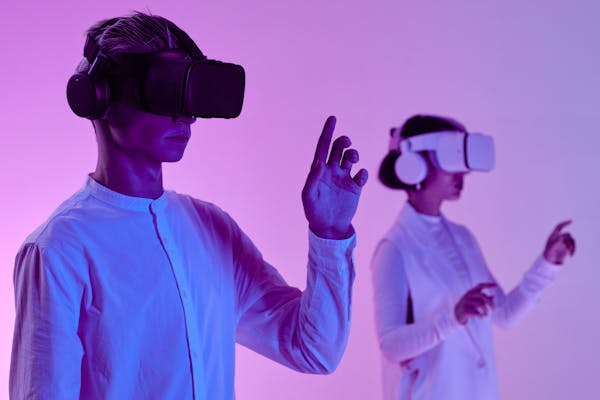
PC-based VR Headsets
- The Powerhouses: PC-based VR headsets, such as the Oculus Rift S and HTC Vive Pro, require a high-performance computer. They deliver stunning graphics and unparalleled immersion for gaming and professional applications.
- Tethered to Innovation: These headsets are tethered to a PC, providing the horsepower needed for lifelike experiences. Cutting-edge graphics cards and processors push the boundaries of realism.
Console VR Headsets
- Console Gaming Revolution: The Sony PlayStation VR2 stands out, providing a plug-and-play VR experience for PlayStation enthusiasts. It bridges the gap between traditional gaming and VR.
Standalone VR Headsets
- Wireless Freedom: Standalone headsets like the Oculus Quest Pro offer the freedom to roam without cables. They house all the necessary hardware, making them portable and accessible.
Mobile VR Headsets
- On-the-Go VR: Mobile VR headsets, like the Samsung Gear VR, leverage smartphones as the display and processing unit. They are budget-friendly options for entry-level VR.
Augmented Reality (AR) Headsets
- Blurring Realities: AR headsets, like Microsoft’s HoloLens, blend the real world with digital overlays, offering a unique mixed-reality experience.
Key Features to Look For
Resolution and Display Technology
- Pixel Density: High-resolution displays, such as 4K OLED screens, ensure sharp visuals, reducing the screen-door effect.
Field of View (FOV) and Refresh Rates
- Wider Horizons: A wide FOV enhances immersion, while high refresh rates (90Hz or more) reduce motion sickness and enhance realism.
Tracking Technology and Motion Controllers
- Precise Movement: Advanced tracking systems, like inside-out tracking and lighthouse tracking, provide more accurate movement in virtual environments.
- Haptic Feedback: Haptic feedback and tactile sensations simulate touch and add a new dimension to VR experiences.
Comfort and Ergonomic Design
- Extended Comfort: Lightweight materials, adjustable head straps, and well-ventilated designs ensure comfort during extended VR sessions.
- IPD Adjustment: An adjustable Interpupillary Distance (IPD) is crucial for users with varying eye distances.
Compatibility with Platforms and Content
- Ecosystem Matters: The availability of a rich content library and compatibility with platforms like SteamVR and Oculus Home significantly impact the overall experience.
Leading VR Headsets
Oculus Quest Pro
- Untethered Brilliance: The Oculus Quest Pro offers an all-in-one VR experience, combining impressive performance with portability.
HTC Vive Pro 2
- Visual Splendor: The HTC Vive Pro 2 boasts a 5K display and precise tracking, making it a top choice for VR enthusiasts.
Sony PlayStation VR2
- PlayStation Integration: Sony’s VR headset enhances the PlayStation gaming experience, bringing popular titles into the immersive realm.
Meta Quest XR2
- Metaverse Entry: Meta Quest XR2 plays a pivotal role in shaping the metaverse, bridging the gap between virtual and real worlds.
Valve Index 2
- Premium PC Experience: The Valve Index 2 offers unmatched fidelity and precision, setting new standards for PC-based VR.
Emerging VR Headset Technologies
Mixed Reality Headsets
- Blurring Boundaries: Mixed reality headsets combine VR and AR, allowing users to interact with both digital and physical environments.
Eye-Tracking Technology
- Visual Interaction: Eye-tracking technology enhances realism by focusing graphics on where users are looking, reducing GPU strain.
Haptic Feedback and Sensory Immersion
- Touching Virtual Objects: Haptic feedback and sensory immersion technology make users feel the virtual world, enhancing the experience.
Wireless Charging and Battery Life
- Wireless Convenience: Wireless charging eliminates the need for frequent battery changes, while extended battery life extends playtime.
Lightweight and Portable Designs
- On-the-Go Comfort: Lightweight, portable designs make VR more accessible and comfortable for extended use.
Wearable VR Tech Beyond Headsets
VR Gloves and Hand-Tracking Devices
- Hands-On Interaction: VR gloves and hand-tracking devices offer precise control and tactile interaction in virtual spaces.
Full-Body Haptic Suits
- Total Immersion: Full-body haptic suits deliver sensations throughout the body, allowing users to feel impacts, touches, and more.
VR Content and Experiences
Diverse VR Applications
- Gaming: VR gaming continues to grow, offering a level of immersion that traditional gaming cannot match. Titles like “Half-Life: Alyx” and “Beat Saber” have set new standards for interactive gameplay.
- Education: VR is revolutionizing education, enabling students to explore historical events, travel to outer space, and dissect virtual specimens for hands-on learning.
- Healthcare: The medical field harnesses VR for patient therapy, pain management, and surgical training, enhancing patient outcomes.
- Architectural Visualization and Design: Architects and designers use VR to walk through digital models of buildings and landscapes, making real-time design adjustments.
- Training and Simulation: VR is crucial in military, aviation, and industry training, offering a safe and realistic environment for practice.
The Role of VR in the Metaverse
What is the Metaverse?
- Digital Universe: The metaverse is a collective virtual shared space, a universe of interconnected digital realities where people socialize, work, and entertain.
- VR’s Pivotal Role: VR is at the forefront of shaping the metaverse, serving as the gateway to this interconnected digital realm.
Implications for Social Interaction
- Digital Socialization: The metaverse blurs the line between the physical and digital world, redefining social interaction and connectivity.
- Economic Opportunities: The metaverse is a burgeoning marketplace for creators, businesses, and individuals, providing new economic avenues.
Challenges and Future Trends
Addressing Motion Sickness and VR-Related Health Concerns
- Cybersickness: Developers are working to reduce motion sickness with improved displays and motion tracking.
- Long-Term Health Effects: Understanding the long-term health implications of prolonged VR use remains a significant concern.
Privacy and Ethical Concerns in the Metaverse
- Data Privacy: Inhabitants of the metaverse will generate vast amounts of data, raising concerns about privacy and data security.
- Digital Identities: Managing digital identities and avatars in the metaverse raises ethical questions and challenges.
Predicting the Future of VR Headsets and Wearables
- Miniaturization: As technology advances, VR headsets and wearables will become smaller, lighter, and more discrete.
- Enhanced Sensory Feedback: Expect increased sensory immersion, with more haptic feedback and precise motion tracking.
Advancements in AR/VR Integration
- Seamless Integration: AR and VR will continue to converge, creating seamless transitions between the real and digital worlds.
Sustainability and Eco-Conscious VR Technology
- Green VR: Innovations in sustainable materials, energy efficiency, and eco-conscious design will become vital in VR development.
The Accessibility of VR
The Cost of Entry
- Affordability: Making VR technology more affordable is crucial for broader adoption.
- Inclusive Pricing: Developing budget-friendly options will democratize access to immersive experiences.
VR for Different Age Groups and Demographics
- Age-Appropriate Content: Tailoring content for different age groups ensures safe and enjoyable experiences for all.
- Accessibility Features: Incorporating accessibility features ensures that VR is inclusive for individuals with disabilities.
Efforts to Make VR More Inclusive and Diverse
- Diversity in Development: Encouraging diverse perspectives in the development of VR technology and content enriches the experiences.
- Cultural Inclusivity: Recognizing and respecting diverse cultures and traditions in VR content creation is essential.
Final Thoughts on Immersive VR Experiences
Virtual Reality has emerged from its fledgling stages to become a powerful force in the tech world. The latest VR headsets and wearables are pushing boundaries, enabling more people to step into the immersive universe. As we continue to explore the possibilities of VR, one thing is clear – the future of technology and human experience is intertwined with these immersive technologies.
So, whether you’re a gamer, a designer, a student, or a medical professional, the VR world is expanding to offer you experiences like never before. Stay tuned for the developments in VR, as we’re only scratching the surface of the boundless possibilities that immersive technology can offer.

